There’s something magical and adventurous about boarding the ferry at Mallaig and sailing to the Isle of Rum – it’s like crossing to another world.
The sea journey is a wonderful and unique experience, with dolphins, basking sharks, whales, and even orcas to be spotted by the sharp-eyed and lucky.
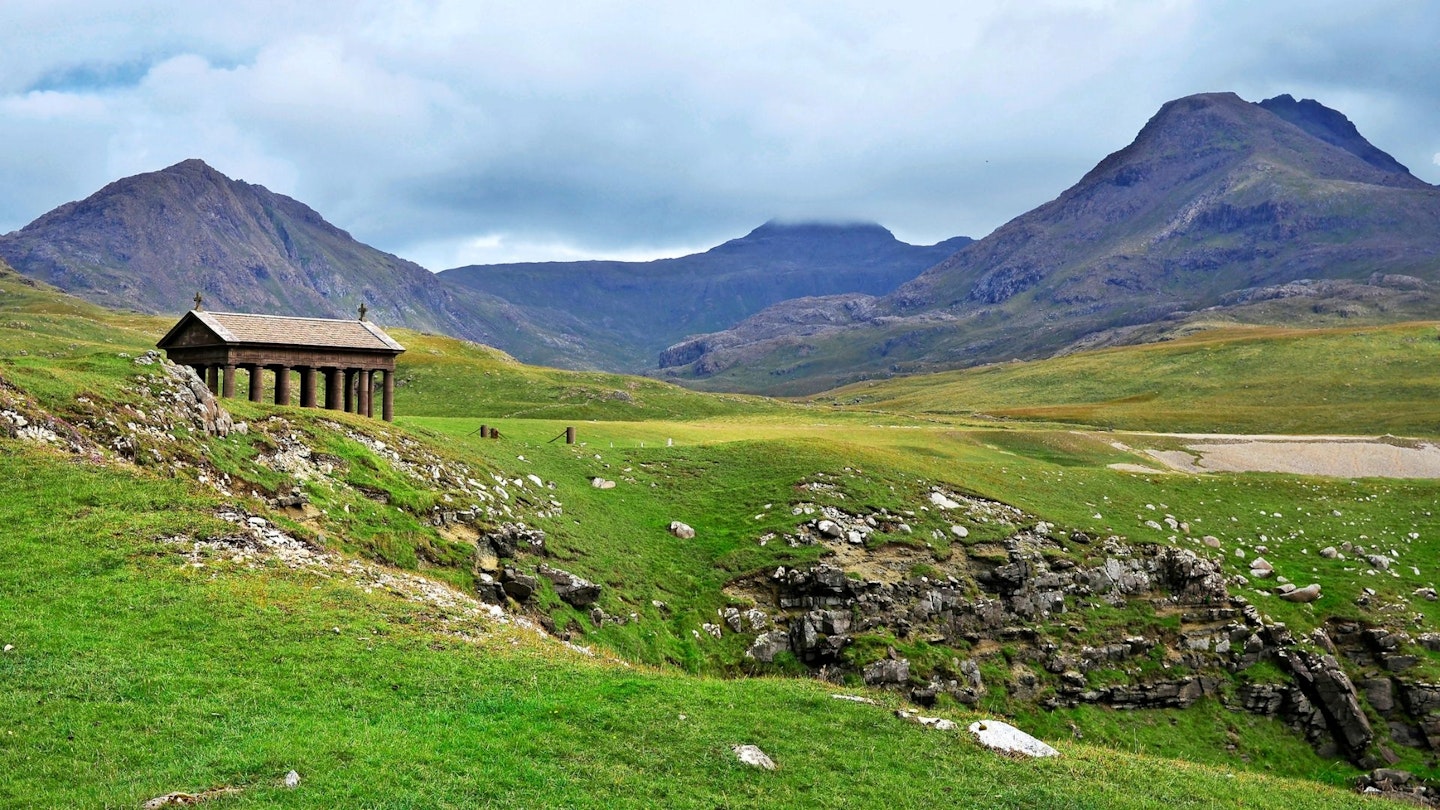
The island has a rich and ancient history, having been inhabited for thousands of years, though nowadays it feels more like a paradise for animals than humans. There are otters, deer, eagles, seals and the midnight runners that are the Manx shearwater birds.
Spending a night in the mountains and hearing the shearwaters return is a truly unique experience and will be one of the most memorable wild camps you’ll ever have. The island really feels like a haven.
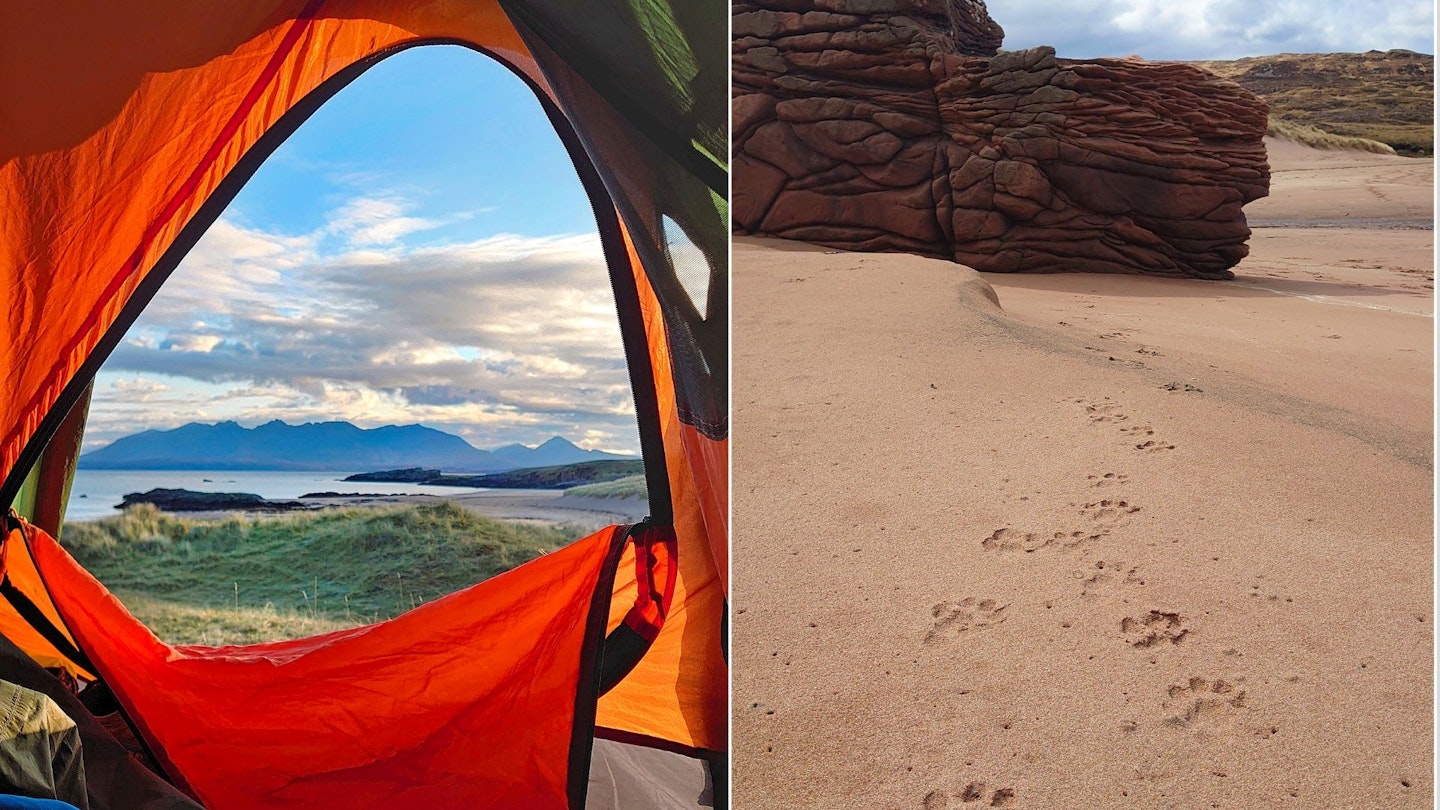
Up until 1957, Rum was owned by a wealthy family and used as a private retreat before being sold to what is now Nature Scotland. The only village on the island, Kinloch, is owned by the 30-40 full-time inhabitants, and the rest of the island is managed as a national nature reserve. It’s the place to be if you want some time away from the world.
You can base yourself in Kinloch, staying in a choice of cosy little huts on the shore of Loch Scresort and exploring it via day trips, or push out into the island and be self-sufficient for a few days. You can even do a quick day trip. In terms of walking, Rum has everything you need: gentle walks to hidden beaches or one of the best mountain walks the UK has to offer.
The Rum Cuillin has to be on your bucket list. However you approach it, you’ll make memories to last a lifetime, so take someone special to share them with.
Here’s our lowdown on how to explore this magical Scottish island paradise…

When to visit the Isle of Rum
You can visit Rum year-round, but different seasons come with different considerations. Winter can be painfully cold and the hazards are increased. Summer brings the midges and ticks, while I’m reliably informed that late July/early August is a good time to spot sea life.
Autumn brings the deer rut, spring the calving period, and the stalking season runs from July onwards. May can be a good month for settled weather, though you can’t ever guarantee it won’t be soaking!

How to get to the island
You must book a foot passenger ticket from Mallaig port and carry everything you need with you. Getting to Mallaig is a fantastic drive through beautiful scenery and you can take a bus or even the Jacobite steam train from Fort William, crossing the famous Glenfinnan Viaduct.
The journey is said to be one of the most beautiful train rides in the world, and famously featured in the Harry Potter movies. Search ‘West Highland Railway Jacobite’ or email enquiries@westcoastrailways.net
Contact Mallaig port on 01687 310240 or visit calmac.co.uk for ferry enquiries. If you get a return via Canna and the other Small Isles, you’ll be in for a memorable trip home.
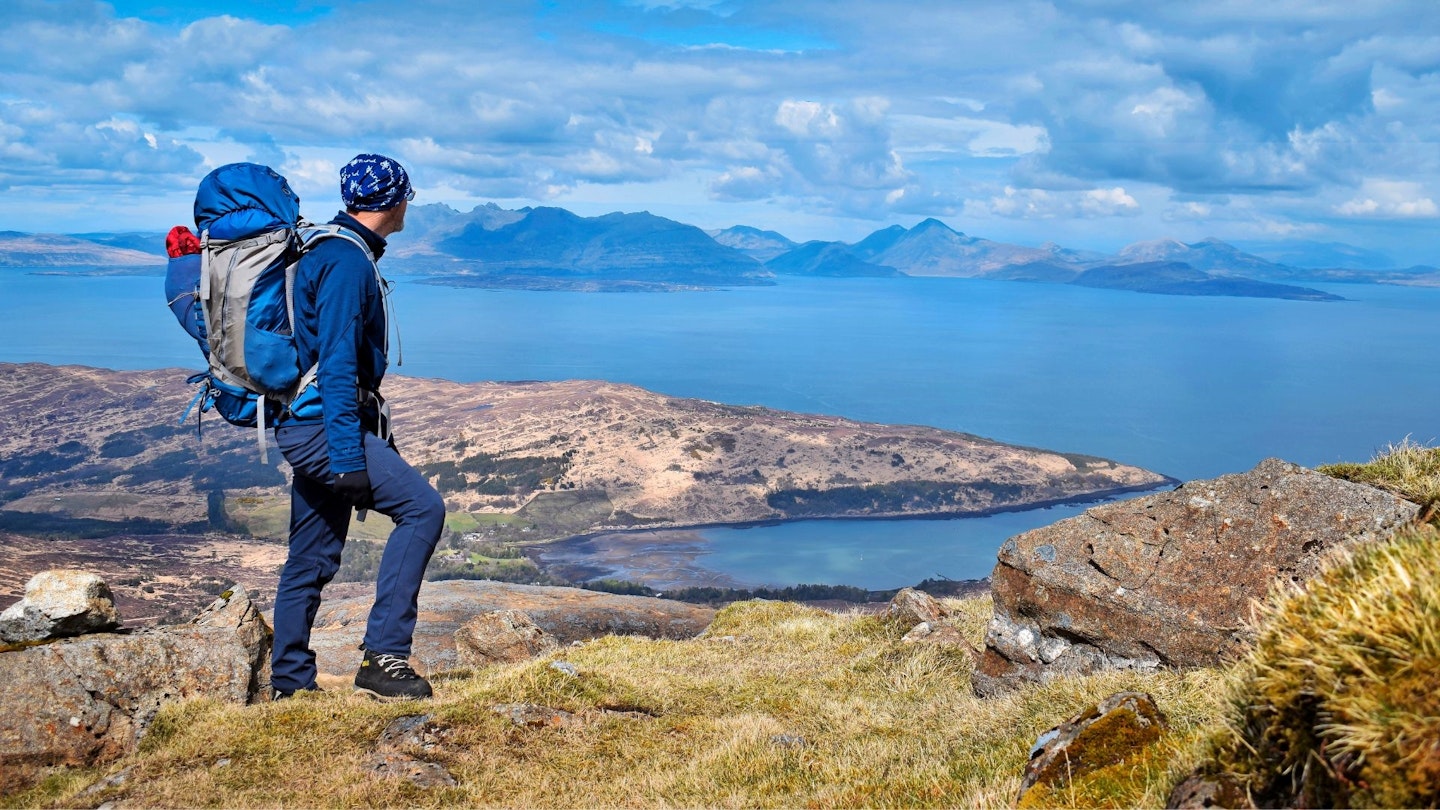
Where to walk on Rum
Rum’s mountains cover the south and west of the island and have a feeling of remoteness you’ll find in few other places in Britain.
The Rum Cuillin is what many come to do. It’s a long, hard route with lots of scrambling, and the route-finding is tough. You can attempt it in one big push, by travelling light and setting off early, or going slow and heavy and camping along the way.
Each approach comes with its pros and cons. Travelling light commits you to getting back or risking spending the night out with no tent, though Dibidil bothy can offer a good escape option.
Travelling with a camping pack takes the time pressure off, but means you will have to be very confident at scrambling on technical terrain with the extra weight. You need to know your own strengths and weaknesses and level of ability.

The enticingly named Bloodstone Hill is a less strenuous day out and gets its name from the rare gems that were once collected from the area. Bloodstone Hill and Orval lie on the west of the island and are less technical mountain days.
The island is home to hidden beaches and inlets, a little exploration can lead you to lost worlds of sand, sea and rock:
Dibidil bothy is around 10km south of Kinloch on a good track, though beware the rivers during or after rain.
Guirdil bothy lies around 10km to the west and is accessed via an occasionally less enjoyable track.
Kilmory Bay is about an 8km walk to the north of the island on a vehicle track. Good for cycling.
Getting around the island
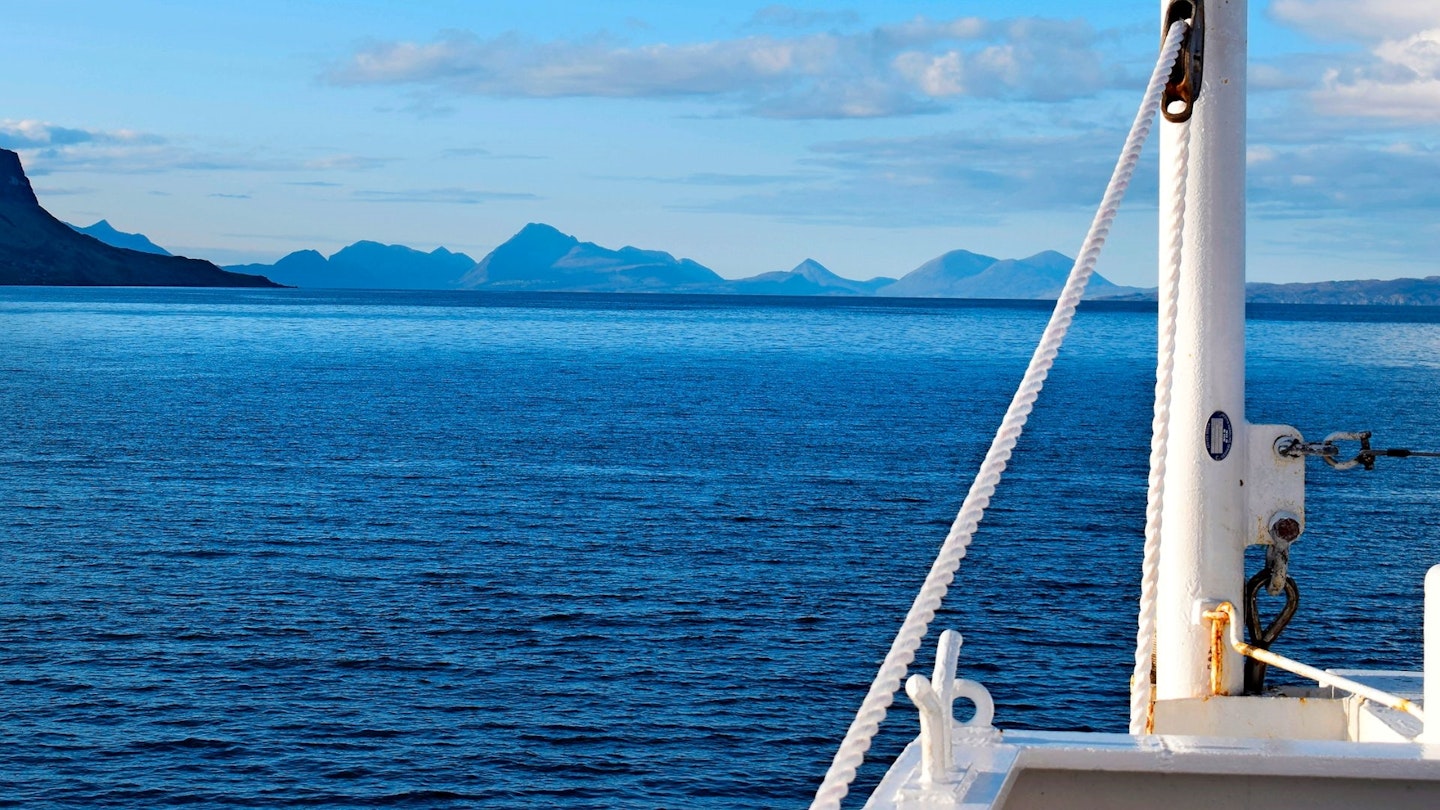
While you’re on the island, you will travel on foot or by bike everywhere you go. There are reasonable vehicle tracks to the north but westward can be notoriously difficult.
The island is flatter on its northern side, with the Cuillin peaks dominant to the south. Kinloch sits on the east and the less technical peaks of Orval and Bloodstone Hill to the west. The island is around 13km wide from east to west, and around 14km long from north to south.
It might be possible to arrange a lift from the ferry to the village for anyone with severely impaired physical ability. Speak to the Mallaig office before travelling if you need this kind of help.
You can hire bikes from fliss@isleofrum.com who also has the Ivy Cottage B&B and a hut.
What to see when you visit Rum

Birds: Rum has a thriving and diverse bird population and is where the sea (white-tailed) eagle was first reintroduced to Britain. If you’re lucky, you might see one soaring around the coast. Another famous bird of the island is the Manx shearwater.
These birds spend most of their lives at sea and return at night to feed their young and nest. It is said the peak of Trollabhal was so named when the Vikings heard the shearwaters returning in the dead of night and thought it was trolls. If you’re lucky enough to experience a night on the mountain, you’ll know exactly why!
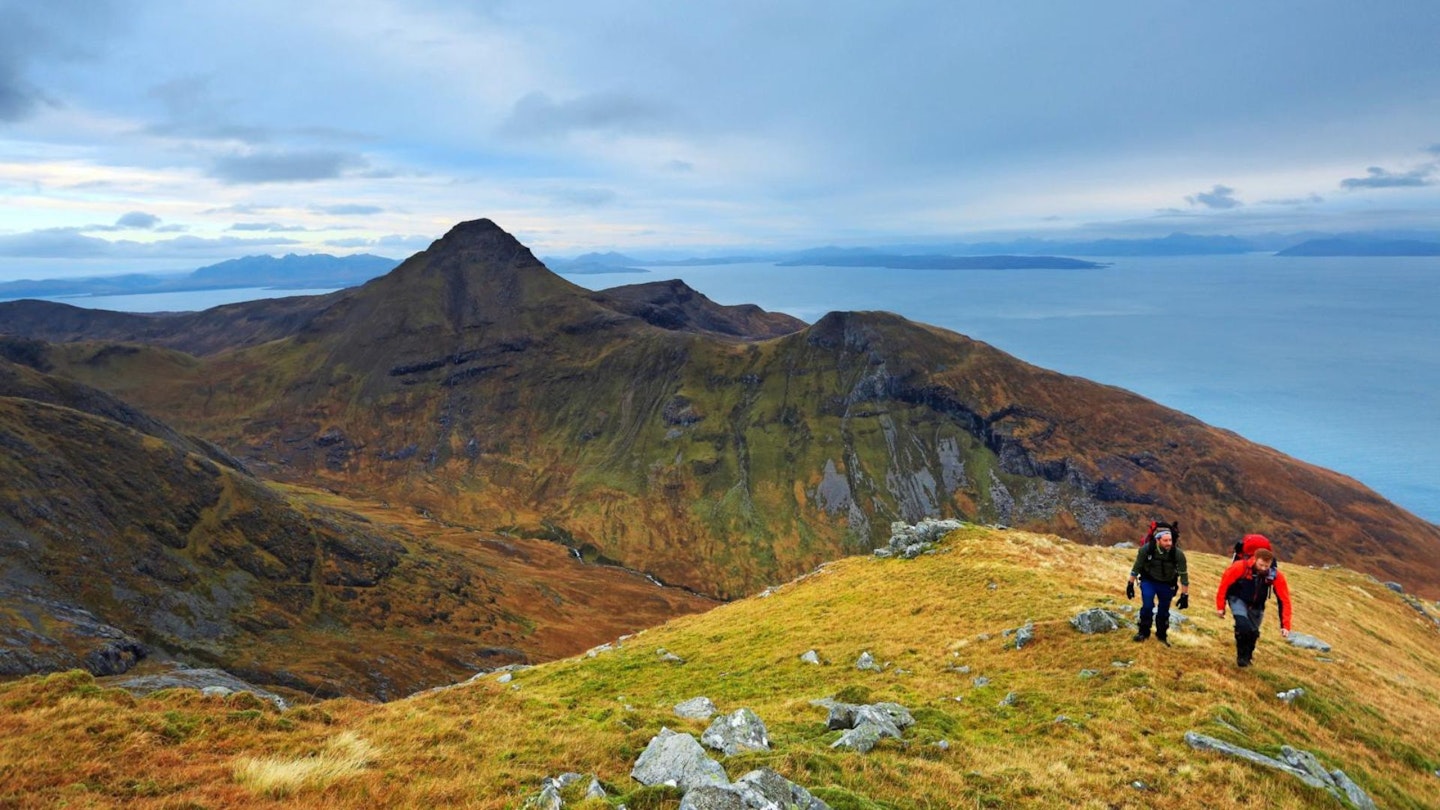
Stars: Lovers of dark skies can do worse than spend a night out on Rum, as it’s one of the darkest places in the UK. If you’re lucky enough to get a clear sky, you can spend hours looking up at the universe.
Sea life: The ferry journey provides an opportunity to spot dolphins, porpoises and whales. Rarer are orcas and basking sharks, but they are here! A small walk from the ferry landing is a beautiful little otter hide.
Land life: Kilmory Bay is a great place to watch large herds of red deer, is home to the longest running study of them in the world, and features regularly on BBC’s Springwatch.
History: There are abandoned villages around the island, left deserted by the Highland clearances, and there is a particularly evocative burial site in Kilmory. A walk out to Harris Bay to visit the Greek-style Bullough family mausoleum should be high on your to-do list.
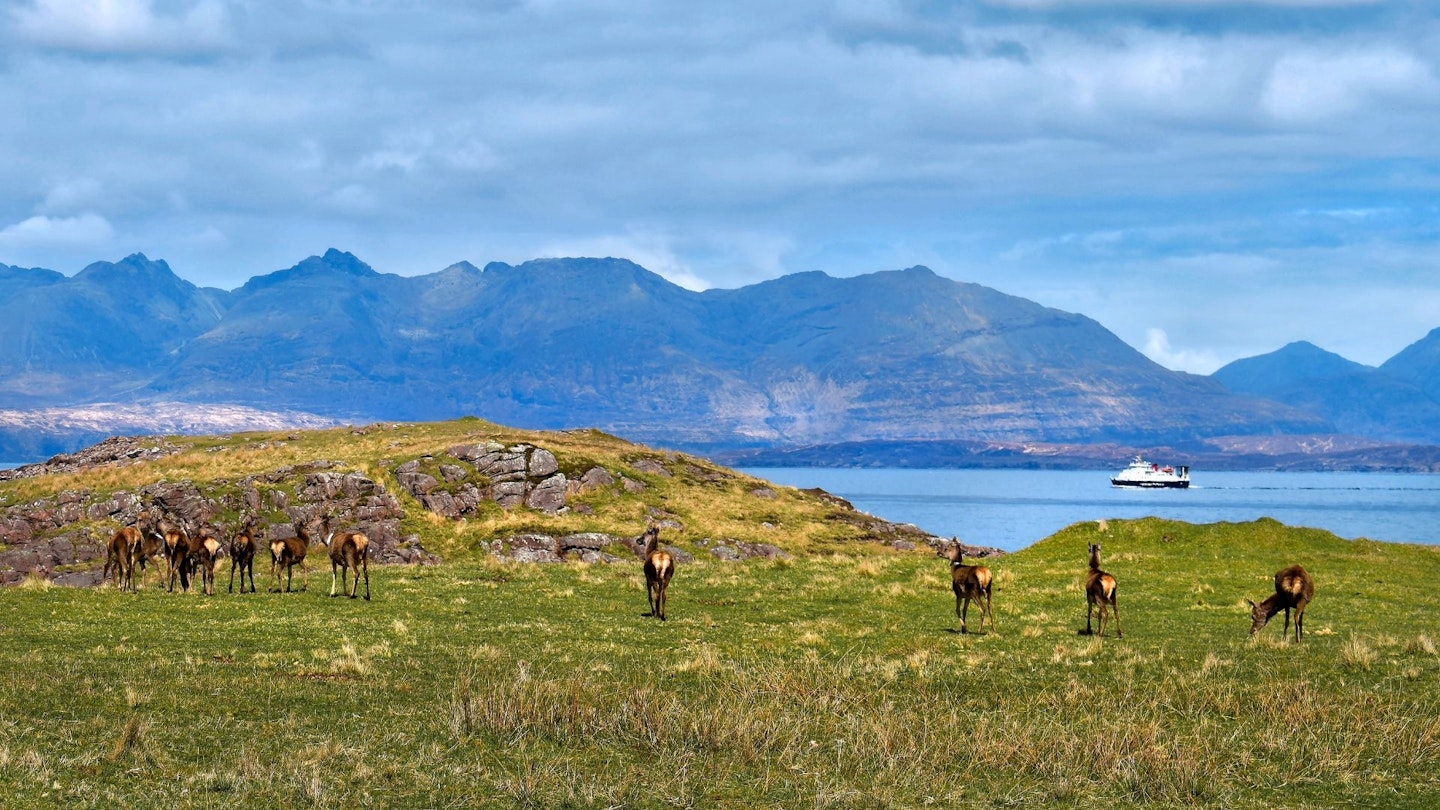
Be prepared for…
All weather conditions. Pack for the worst. The island has its own microclimate and can be very wet, even when everywhere else is sunny!
No phone signal. Phone service is patchy on the island, particularly in the mountains. The village is well covered and you can use the Wi-Fi at the village hall in return for a donation.
Delayed ferries. Bad weather can halt the service for some time.
Midges and ticks. Get in the habit of checking your clothes and body for ticks, and be prepared for plagues of midges during the summer.
Nesting considerations. Springtime is crucial for eagles and there are also ground-nesting birds both on land and shorelines, with some being quite rare. Seal pups also come up onto the shoreline, so dogs must be kept under close control at all times.
Where to eat and sleep
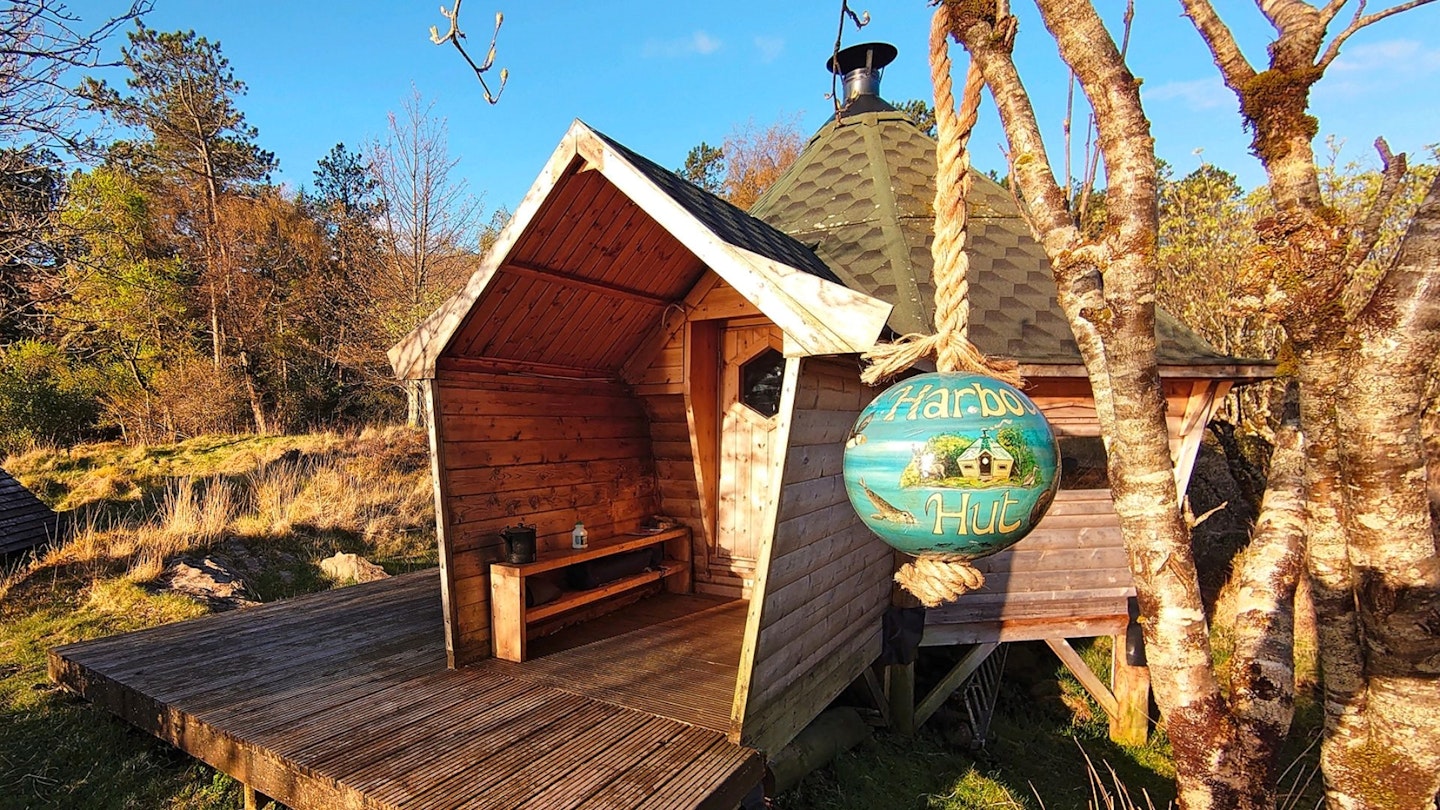
The first and most important thing to keep in mind when you visit is that minimising your impact is absolutely essential. The island community is very welcoming and it’s important to return that goodwill.
The economy is small, so using the village shop to stock up on supplies for your stay is great for everyone and will save you carrying it on the ferry. The shop is really well stocked with lovely food and snacks, and from there you can hire out the BBQ / Harbour hut, which is absolutely amazing! Contact Jinty at rumshop@email.com for food enquiries and booking of the hut.

There is also a bunkhouse and other amazing little huts to rent out, and you can sleep in bothies and on beaches or camp in the hills. There are a few camping spots in the village too. Check out rumbunkhouse.com and isleofrum.com for a list of accommodation and more general information.
There are public toilets and showers just past the jetty, so you can freshen up while you’re in the village – particularly handy if on an expedition or staying in the huts. Remember to carry some money to donate towards the maintenance and cleaning costs.
You can also use the village hall Wi-Fi for a donation. Again, contributions for these services in remote locations are always appreciated by the communities.
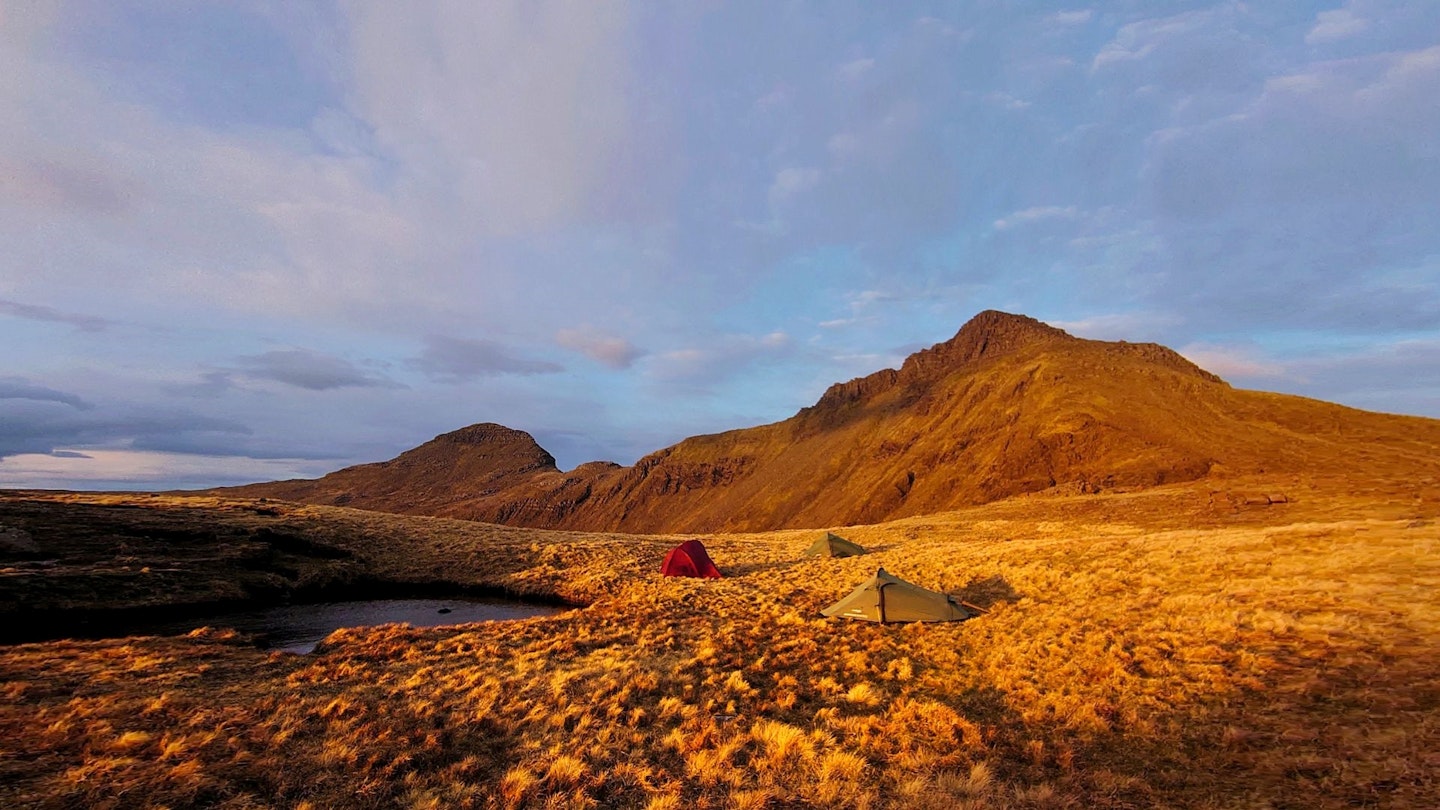
Staying safe
Planning ahead is important when visiting Rum, especially when heading into the mountains. You have to be prepared, equipped and experienced. It’s not a place to get into trouble.
There is no Mountain Rescue on the island, and help might be several hours away or outright impossible if the weather prevents a rescue party travelling from Skye or Fort William.
To put it bluntly, you simply cannot get into trouble. There will be nobody to come and walk you off the mountain if you get a bit lost! Phone signal can be hit or miss, so self-sufficiency is very much the approach to take.

Keep on top of the weather forecasts when you do get signal. Leave an outline of your plans with someone and send a text home to update anyone looking out for you at regular intervals.
It might also be possible to leave your route card with the bunkhouse or at the NatureScot office. It is worth taking an outdoor first aid course before heading away on trips like this.
Some routes on the island can be treacherous after rain, with rivers becoming deep and fast flowing. The return from Dibidil is one to be especially careful of, as the rivers flow over cliffs into the sea.
What to pack
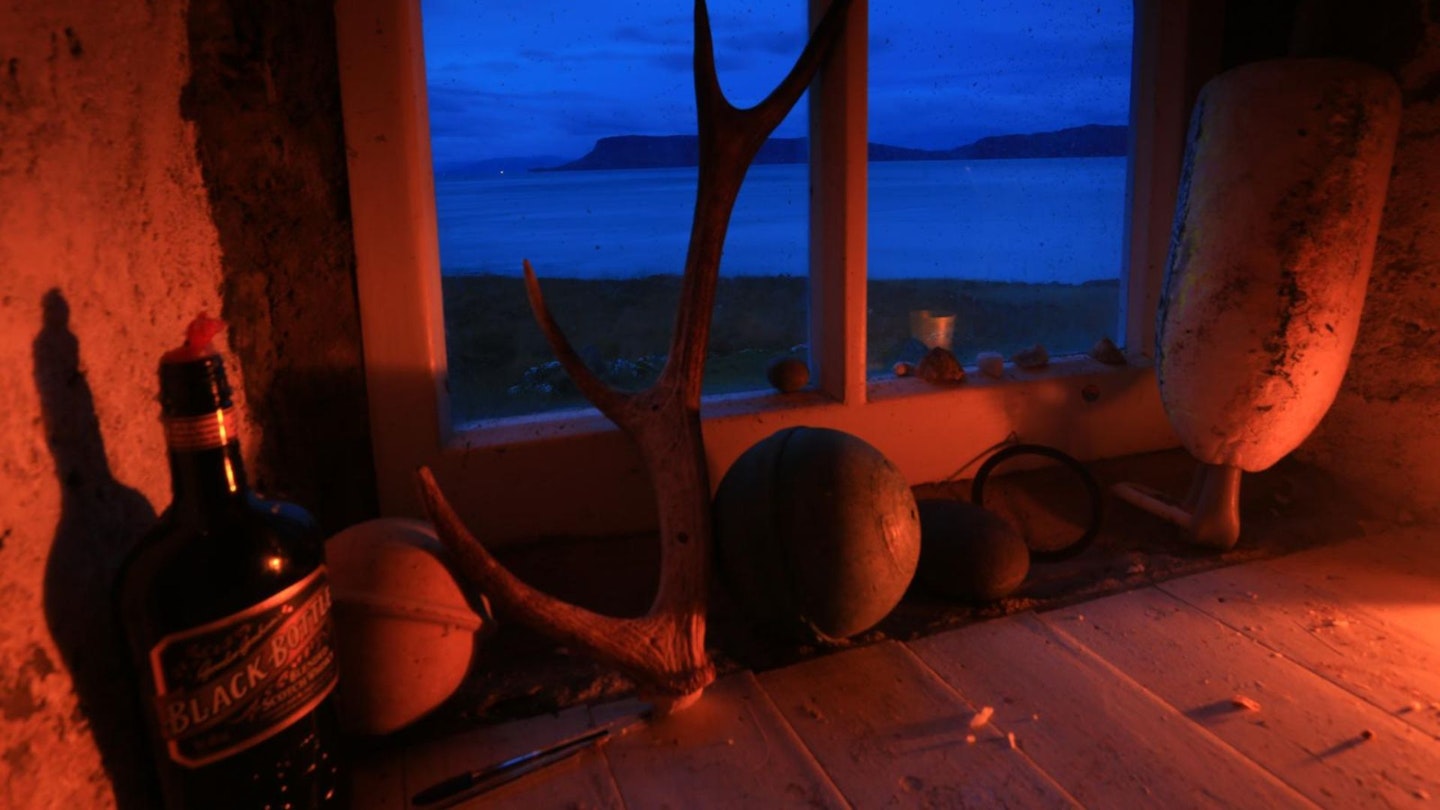
Bring everything you need with you and remember that specific items can be arranged to be brought over to the shop for collection. Assuming you already have standard walking and wild camping kit, then extra consideration should be given to:
First aid kit. Carry extra items such as burn gel, painkillers, rehydration salts. Plus sunscreen and UV protection for your lips. Tick removal tool.
Group shelter will be essential if you have to sit and wait for help, or even if the weather just turns for the worse. You can sacrifice this if you’re camping, as a tent will do the same job.
Blizzard vest is essential if you’re not camping.
All personal medication and medical devices as there is no hospital or doctor’s surgery available on the island.
Walking poles. Essential for crossing rivers and awkward ground, they also help with weight distribution when carrying a heavy pack and can double up as a splint.
Binoculars. Get a travel pair for the wildlife. You’ll be glad of them when you think you can see an eagle.
Spare torch is better than spare batteries. Spare batteries can’t be used for light if you break your torch.
Repair kit. Gaffer tape wrapped around your water bottle will be good for most things. Zip ties can also come in handy. Waterproof repair strips can be invaluable for clothes and tents.
Lightweight waterproof bivvy bag. Extra protection for your sleeping bag and can be used as an emergency shelter.
Water filter or purification tablets. Some flowing streams are fine to drink from directly, but other locations require the water to be cleaned first. The less a water source flows, the less you should trust it.
Insect repellent and a midge net. This is Scotland, after all!
Dry socks. A small luxury but they can be a little bit of heaven.
A paper map. With limited phone signal and potentially limited phone battery, don’t rely on precious battery life to navigate. Conserving the phone battery is essential. Harvey Map’s 1:25k map of Rum, Eigg and Canna is a great choice.
Power bank. Depending on how long you’re travelling for, a good power bank of around 20,000mAh will offer extra charge for your phone and torch as well.
About the author
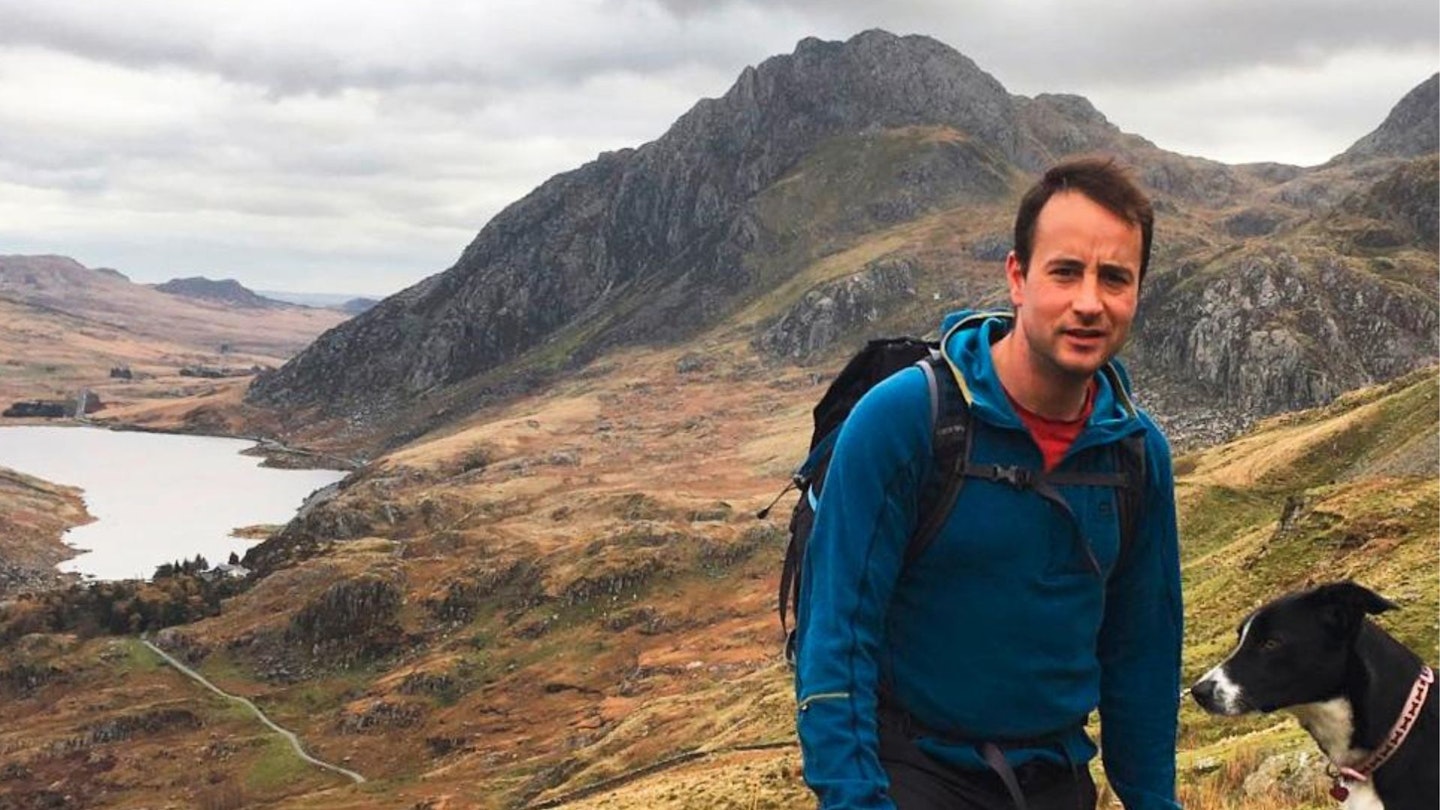
Jamie Rooke is a qualified Mountain Leader with a passion for helping people explore Britain's hills and mountains. He's been writing articles and route guides for Trail magazine and LFTO for years and is also one of our go-to experts for navigation tips and advice.
